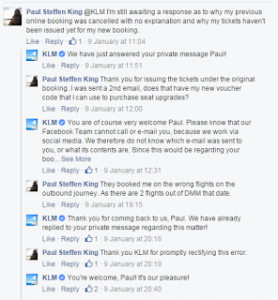
Facebook, Twitter, LinkedIn, Instagram—the number of social media networks in the past few years has increased and will continue to do so in years to come. As these continue to gain popularity and usage, social media marketing is becoming essential to include in marketing strategies. For many B2B organizations, some of these platforms are included in marketing campaigns. Managing several social media accounts, including creating content, tracking content and data and scheduling, can be a much more difficult task than you might expect. For organizations with limited resources and time, this can become a challenge to manage effectively. However, there are ways to use your time and efforts more efficiently. Here are four tips that are useful for managing social media marketing.
1. Keep Your Ideas and Posts Organized
Being organized can oftentimes make challenging tasks easier. A social media marketing calendar is the ideal place to keep ideas and posts outlined and organized. Having a single location for your social media schedule that includes what platform something will be posted on, what time it will be published, what the content is, the link and any additional notes. For an effective social strategy, you do not want to publish several posts at once but rather schedule them throughout the week. This way, it doesn’t overwhelm your audience with everything be posted at one time. Having an organized schedule allows you to visualize when everything will be posted which can prevent pushing too many pieces of content out at once. When you go back to create new posts or log new ideas, this can be the single location to go to. Ensuring consistent messaging across posts can be easy to see in this view as well. There are a variety of ways to create a social media calendar, but to get you started, check out these ideas. It can be as simple or as detailed as you would like it. Making sure it works for your team is what matters the most.
2. Track Your Data
Tracking data from social media efforts is key to ensuring that your content is performing and achieving the goals set in your strategy. Utilize a simple spreadsheet to keep up with your account statistics and set aside time to update it when needed. This allows you to keep up to date with trends in your accounts and make necessary changes. What data should your team be documenting? Platforms such as LinkedIn, Twitter and Facebook have insights on post and account performance that can be useful to track, but data points such as impressions, engagements, followers and shares can help show how your social posts are performing. These are not the only metrics to account for, but be sure to include those that help determine the success of posting strategy and content. Over time, you will then be able to see patterns and trends for overall posts and make decisions on future strategy.
3. Set Aside Time to Find New Content
With the vast amount of information available, it can seem overwhelming to try and find content relevant to your audience. Planning posts and finding content can be time consuming but setting aside time in advance to browse Twitter, LinkedIn, Facebook or whatever social media platform you use can help this process. Search for industry keywords, hashtags or in groups can be useful as they will oftentimes post and share content accordingly. Along with this, it can be useful to create a list of resources that you oftentimes use for social post content. For example, if you find articles on the Forbes, Fast Company or Entrepreneur websites, include the link to the website, or specific page on the website, in a list. When you are planning posts, you can refer back to this list so you are not pressed to find content with nothing to start from. Another easy way to find content is by subscribing to industry email newsletters. These newsletters are constantly delivering fresh and relevant industry content. It is worth looking through these to see if anything stands out to you and would be something your audience would want to read as well.
4. Utilize a Management Tool
Social media management tools can simplify all things social media. For example, tools such as Hootsuite, Sprout Social and Buffer can do a wide range of activities. With these tools, you can automate posting, schedule posts in advance, control accounts and analyze data. Choose a tool that best fits your organization’s needs. With a tool implemented, you can easily schedule posts in advance, use the analytics capabilities to track progress and success and monitor when posts will be published.
Social media marketing has established itself in the B2B marketing space. With these four tips, you give your organization the opportunity to manage your social media efforts effectively and efficiently.
Digital & Social Articles on Business 2 Community
(153)
Report Post






